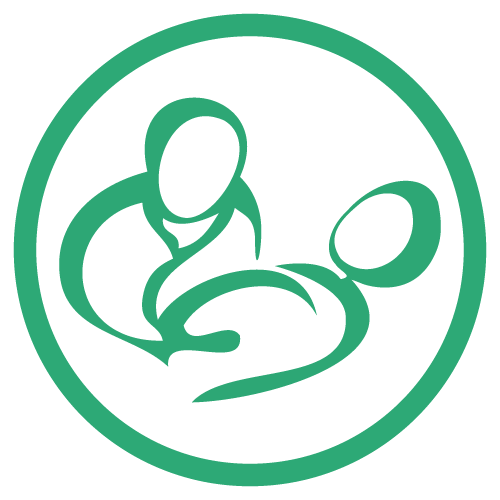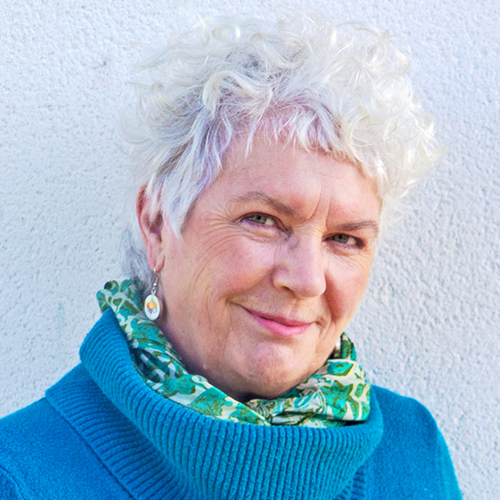 Labour & Positioning Online Course(s) & Continuing Education
Labour & Positioning Online Course(s) & Continuing Education
Access the latest clinical skills and research for Labour & Positioning for PREGNANCY, LABOUR & CHILDBIRTH professional training. These Labour & Positioning online courses provide practice-changing skills and valuable perspectives from leading global experts. This Labour & Positioning education has been accredited for a variety of CEUs / CERPs and can be accessed on-demand, at your own pace.

DANCING FOR BIRTH™ — A Powerful, Evidence-Based Birth Method to Improve Birth Satisfaction

Stephanie Larson is the visionary creator and founder of Dancing For Birth™―the powerful class which combines prenatal/postnatal fitness, childbirth education, and sacred celebration and has become a global sensation as the ‘trifecta’ of birth preparation. Over 20 years ago Stephanie instinctively ‘danced-out’ her first child in an empowering and euphoric four-hour birth. Upon hearing her peers’ stories of their traumatic births, she felt called to change the status-quo and bring a radically different birth method to parents and the professionals that serve them. Now, Certified Dancing For Birth™ Instructors on four continents educate and mentor parents on an ongoing weekly basis from pre-conception through postpartum (including baby). With each dancing labor, and the resulting connection to body, baby and bliss, birth is being transformed from fear, pain and trauma to power and pleasure.
A world-renowned expert on utilizing movement, instinct and gravity to support easier birth, Stephanie’s appearances include LAMAZE, ICAN, DONA, CAPPA, CIMS, ICEA, AWHONN, CBS, NBC, Fox and ABC. She was voted USA’s National Birth Hero by the birth community (One World Birth Award). Stephanie is the executive producer of the DVD “Prenatal Dance and Birth Wisdom.” She’s a mom of four who calls for an end to forced lithotomy position and a global shift to primal, powerful, euphoric birth and conscious parenting. Reach Stephanie at [email protected]
Birth satisfaction is an important measure of the quality of perinatal care and is pivotal in creating a positive birth and postpartum experience. How can we maximize it? Dancing For Birth™ is a perinatal class for parents and a birth method created to diminish labor pain, increase birth satisfaction and empower the birthing family. It is also an advanced training for perinatal professionals, providing the philosophy and practical skills necessary to support this mode of birth, including original techniques based on Dancing For Birth’s principles of movement, gravity and instinct. The ‘new sensation’ we’re now witnessing of birth dance going global and labor dance videos going viral has been 20 years in the making. Far from a trend, it’s indicative of the future of birth, in which freedom of movement and birth position of choice are paramount. In this interactive session with founder, Stephanie Larson, we’ll be introduced to Dancing For Birth™, its origin and efficacy. We’ll practice moves that encourage fetal rotation and descent while naturally increasing comfort. We will address the evidence regarding dancing during labor, and we'll explore the factors that make dance so transformative for birth.

Hand Jiggling the Pelvis in Birth: Creating Space & Improving Labour Progress

Jenny Blyth has been supporting women & parents through natural birth for over 40 years. She is an independent birth educator, birthworker, bodyworker, Associate Practitioner of Ortho-Bionomy, Spinning Babies® Approved Trainer, Spinning Babies® Aware Practitioner & Trainer, & Internal Pelvic Release Work Practitioner & Trainer. Her particular focus is on body awareness & body preparation for birth & recovery, & encouraging greater self-responsibility in parents - to realise potential in birth & reduce birth trauma. She specialises in pelvic bodywork for wellbeing, balance, comfort & healing. Other birthwork interests include nourishing birthing wisdom & challenging beliefs & assumptions about birth care. Jenny regularly facilitates workshops in Australia & overseas. She is project co-ordinator for Lao Birthwork, teaching hands-on & emergency skills to health staff in remote areas of Northern Laos. She is also an author – The Down to Earth Birth Book, Birthwork - & filmmaker -The Big Stretch films & A World of Birthworkers. Jenny lives in the Australian bush with her partner, and is the mother of 3 grown children and grandmother of 3.
Jenny Blyth has been supporting women & parents through natural birth for over 40 years. She is an independent birth educator, birthworker, bodyworker, Associate Practitioner of Ortho-Bionomy, Spinning Babies® Approved Trainer, Spinning Babies® Aware Practitioner & Trainer, & Internal Pelvic Release Work Practitioner & Trainer. Her particular focus is on body awareness & body preparation for birth & recovery, & encouraging greater self-responsibility in parents - to realise potential in birth & reduce birth trauma. She specialises in pelvic bodywork for wellbeing, balance, comfort & healing. Other birthwork interests include nourishing birthing wisdom & challenging beliefs & assumptions about birth care. Jenny regularly facilitates workshops in Australia & overseas. She is project co-ordinator for Lao Birthwork, teaching hands-on & emergency skills to health staff in remote areas of Northern Laos. She is also an author – The Down to Earth Birth Book, Birthwork - & filmmaker -The Big Stretch films & A World of Birthworkers. Jenny lives in the Australian bush with her partner, and is the mother of 3 grown children and grandmother of 3.
Jiggling the external pelvic soft tissues by hand is a highly effective and recommended way to mobilize the pelvis, release tension, synchronize body systems, create more space to optimise or change the baby's position, and calm the nervous system – in pregnancy and in birth. It has also been known to facilitate labour progress in general, and in particular when labour has stalled. Highly enjoyable and simple to implement, it is an easy-to-teach practice for both care-providers and couples. This presentation will cover the why and how of pelvic jiggling, including touch considerations and contraindications.

How to Correctly Use Peanut Balls During Labor

Cheri Grant RN, ICCE, CLC, ICD, CLD, CD BDT(DONA). Is the Coordinator of LifeStart Program at St John Owasso Hospital. Childbirth Graphics named her “The Peanut Ball Lady” She is the founder and consultant for Premier Birth Tools a website that has resources for peanut balls and its mission is to get peanut balls in every hospital in the United States with resources for everyone in the world, and to teach how to use it correctly. She continues to guest lecture to OU, OSU residents and nurses on maternal and child health topics such as the "Secrets of Labor Support." She spoke on the peanut ball at the National LAMAZE convention “The Peanut Ball- New Tool for Your Doula Bag and Its Effect on Laboring Women “She has also published several an articles on the peanut ball including " The Peanut Ball: A Remarkable Labor Support Tool " in the DONA international magazine and the "Peanut Ball, Improving Options for Women Laboring with an Epidural" in Australian Midwifery News. She has recently been featured on the Podcast “How do Peanut Balls Support Labor? “ for Evidence Based Birth. She is an Authorized Peanut Ball Trainer and has developed many educational tools for the peanut ball. She also has given over 100 in-services on the peanut ball. She is the Founder of Tulsa Doulas Inc. Doulas of Northeastern Oklahoma which she started 25 years ago. She is a Birth DONA Doula Trainer her certificate number is #2 as a trainer for DONA. She is certified as a Doula through DONA, ICEA and CAPPA. She is an internationally certified childbirth educator through ICEA for over 30 years. Cheri is an author of “Labor Support Forms – A Guide to Doula Charting” which is in its Third edition and on the app Mobile Doula . Several of her articles have been published in ICEA and DONA Journals. She has lectured at DONA international conventions and AWHONN State conventions “. The Peanut Ball" and Implications for Women Health”. She also produced and directed a Video on “Comfort Measures for Labor.” She teaches and coordinates training workshops for Birth Doulas and nurses talking about the profession of doulas around the country. She previously was a lactation consultant IBCLC for over 10 years. She also maintains her lactation educator. Previously she was also AWHONN certified in-patient obstetrical nurse for many years. She was also featured on the front page of the Tulsa World for her 42 years of work with pregnant and laboring women. Teaching and speaking about how to correctly use the peanut ball is her passion.
In this presentation, those new to the peanut ball will learn how to use this tool to progress labor and experienced birth professionals will expand their knowledge. You will learn the original seven peanut ball positions and be introduced to a few new advanced positions. You’ll learn the latest research on peanut balls use in labor. You will learn how to properly cover, clean and store peanut balls. You will learn how to correctly size peanut balls for your client depending on what position they are using in labor. One size peanut ball does not fit all clients. Identify contraindications for the peanut balls. Differentiate how to place clients hips internal or external rotation, using this information in relation to where the baby is in the pelvis such as in the inlet, midpelvis, and outlet when using a peanut ball as a labor tool.


Avril is the founder of the Midwife Method - a midwife-led, supportive and educational online program dedicated to empowering all birthing people who want to experience a conscientious and connected pregnancy, birth and transition into parenthood. Who want to learn to thrive in body, mind and spirit and not only feel prepared and informed every step of the way...but loved, supported and guided throughout. This incredible resource is available for busy midwives to count on, to provide for all the educational needs of their clients to have a healthy, joyful and empowering pregnancy, birth and smooth transition into parenthood.
For the past four years, she has loved being an instructor and office manager with Birth Emergency Skills Training® (B.E.S.T.), as well as co-developer of the Online and Hybrid programs. B.E.S.T. is dedicated to improving maternal and fetal outcomes by helping midwives effectively, efficiently, competently and confidently manage emergencies when they arise.
She has been intimately woven into the fabric of serving birthing families since 1998 working at home and in birth centers. Together with her partner, she has home-birthed, home-schooled and raised 3 incredible human beings (18, 24 and 26)!
With an unquenchable thirst for knowledge and desire to support a broader population in attaining their health goals, she returned to school, completing a Bachelor of Science in nursing in 2016, then pursued a Family Nurse Practitioner degree at Georgetown University which she was unable to complete due to unforeseen circumstances.
Topic: STOP Postpartum Hemorrhage in its TRACs - [View Abstract]
Shoulder dystocia remains one of the most feared obstetrical emergencies in and out of the hospital, for good reason, it can be scary, is notoriously difficult to predict and can lead to further complications in both mother and baby. Thankfully, there are simple and effective techniques that can be employed and adapted to any environment which safely resolve the issue, much of the time. The single most important predictor of a favorable outcome is a practitioner who is alert to the signs of shoulder dystocia, well prepared to manage one and aware of how to help prevent neonatal injuries in the process. Therefore, a thorough understanding of the pathophysiology and mechanisms of action used to resolve impacted shoulders is imperative along with a team that communicates effectively and is able to manage the associated complications. Move it! Get the Shoulders Unstuck! offers a clear, up-to-date review of prevention, early recognition and responsive, effective management to resolve shoulder dystocia. Come join us on this journey through this sticky complication, one that will hopefully alleviate your fears and provide you with the skills you need to calmly disimpact the shoulders while keeping the baby safe and improve maternal and fetal outcomes.

Resolving Labour Dystocia Through Improved Understanding of Birth Biomechanics

Molly O’Brien is an experienced midwife, with more than 20 years of clinical practice and has attended over a thousand births. She is also a hypnobirth and birth preparation teacher, an associate university lecturer, has created courses for midwives, campaigned for midwife led birth units and been a passionate student and enabler of normal physiological birth. She has worked in all areas of midwifery. Her favorite work was in the home environment and a Midwife Led Birth Unit. It allowed her to attend hundreds of undisturbed physiological births. It also gave her the opportunity to make a systematic exploration of midwifery skills and observations that can help resolve long difficult labours caused by a suboptimal position. The techniques and strategies that emerged from this time helped her revolutionize her own practice. She began to regularly witness dramatic progress as she put them to use in “difficult labours”. Now she teaches the course she developed for Birth Professionals, ‘Biomechanics for Birth’. She also taught for a master's course at the City of London College and runs a 3000 strong Facebook group Biomechanics for Birth for birth and women’s health professionals that carries a lively and informed discussion on a wide range of women's health issues.
In order to resolve labor dystocia in an effective and holistic manner, a deeper understanding of pelvic anatomy and physiology is required. Pelvic dynamics, the mechanical relationship between the pelvis and the rest of the body, and the dynamic interaction of the mother/baby dyad offer the chance to view birth through different eyes. This knowledge can help the health care provider to recognise activities and lifestyles that increase the chances of labour dystocia. Furthermore, this understanding will help providers identify signs of a mechanical disruption during the birth process. This presentation will offer timely techniques and positions, based on the principles of biomechanics, that increase space in the pelvis and avoid medical intervention.

View Details / Enroll


Tammy Ryan has been attending births since 2002. She is a birth doula trainer for DONA International, childbirth educator, midwifery assistant and one of six trainers world wide for Spinning Babies. Tammy has sat on the DONA International board of directors plus several other boards. She started working Internationally in 2008 when she went to DR Congo to train life saving skills in childbirth according to the World Health Organization. She has served in Haiti, Rwanda, Burundi, Tanzania, Kenya, Korea, Japan, India, Israel & Brazil. Tammy has presented childbirth information on several venues including international conferences, TV, radio, universities and to the Ministry of Health. She has been published in the quarterly International Doula and on several blogs. Tammy teaches When Survivors Give Birth as a way to help survivors and birth workers. Tammy has experienced first hand the barriers women face worldwide in getting adequate care in childbirth and postpartum.
By understanding the current research on the OP presentation the learner will be able to help improve unnecessary cesarean rates due to the lack of progress and/or maternal and newborn morbidity rates. They will learn simple maternal positions that will open each level of the pelvis so the baby can find room for decent and rotation.

Stirrups Are Restraints: 5 Simple Steps to Overcome Barriers to Upright Pushing

Mandy Irby, pronouns are she/her, is a board certified labor nurse with 13 years of experience supporting survivors of assault and trauma through pregnancy, birth planning, and at their bedside during childbirth and pregnancy loss. After experiencing her own birth trauma, she quickly learned that the birth care system is NOT centered on human rights, patient choice, and the individual experience. In 2020, Mandy made education a full-time career. She now teaches and supports parents and nurses how to better center voice, choice, and physiology in birth. It's Mandy’s mission to change birth culture so that it's parent-centered, trauma-informed, and safe for all.
Mandy enjoys teaching in-person, in whole-team learning: Peanut Ball, Labor Support Skills and Trauma-Informed Care At the Bedside workshops. She also supports local parents with small-group Spinning Babies® Parent Classes when in-person learning is safest. Mandy is also an international educator through her online, on-demand childbirth ed classes and she supports anxious parents-to-be with virtual, one-on-one trauma-informed birth strategy sessions. She’s the co-founder of Fearless Birth, Delivered, founder and owner of The Birth Nurse®, and a proud co-creator of the BRAND NEW Trauma-Informed Birth Nurse Program. As a creative educator, Mandy is also the co-author of an Amazon best-seller, Baby Got VBAC, and reaches millions of viewers each month through her engaging, tongue-in-cheek social media platforms.
When she’s not working from home, Mandy might be found at any local plant nursery adding to her, some may say, out-of-control house plant collection. She’s a serial craft starter and non-finisher, loves walking her doodle puppy, and playing in the creek with her 2 kids.
Topic: Trauma-Informed Care: A Guide to Patient Advocacy for Trauma Survivors - [View Abstract]
All of the evidence, professional organizations, and birth physiology supports giving birth in a variety of positions but somehow, despite nurses' best efforts, most birth givers end up in a supine position. Learn the powerful, trauma-informed steps to advocate for your labor and birth patients in upright pushing positions. Join this lecture, discussion, and demonstration as we identify and demonstrate the 5 simple steps to overcoming these barriers to upright pushing.

The Issues in the Pelvic Tissues and Some Possible Solutions

Fiona has been a midwife for 32 years. She is also a registered nurse and maternal & child health nurse, a birth educator and bodyworker. She has worked in Melbourne public and private birthing hospitals and has supported many families with the birth of their babies at home and in hospital. Interwoven throughout her midwifery practice has been an involvement in midwifery education and the teaching of Birthwork Workshops. The focus of all birth related teaching is on the dynamic pelvis and how to make space for the baby. Fiona is also a Spinning Babies® Approved Trainer. When not teaching workshops, Fiona offers bodywork sessions to women in a 1:1 capacity, with particular emphasis on internal pelvic release work. She has been instrumental in establishing the Internal Pelvic Release Work Mentoring Program in Australia. Fiona’s drive to teach is fuelled by a desire to see childbearing women hold birth knowledge, learn to honour their pelvic treasures and work with their innate power and in so doing, eradicate birth trauma. Fiona lives in Melbourne, Australia.
Topic: The Issues in the Pelvic Tissues and Some Possible Solutions - [View Abstract]
The soft connective tissues of the pelvis are so underestimated in their potential impact on birth. The tension held in the web of pelvic tissues can be known or unknown and either way, can cause havoc when baby is attempting to spiral through mother’s pelvic tunnel. Where do these issues in the tissues come from and what can we do about them as carers at birth? How can we work with these soft tissue connections creatively to make space?

View Details / Enroll

The Ups and Downs of Birth Positions: Pelvic Biomechanics, Birth and the Pelvic Floor

Mandy Rempfer-Kuncio is passionate about the pelvis! She believes the pelvis serves as the foundation for many fabulous things like pregnancy, birth and babies (including 3 of her own). Mandy has been a pelvic + reproductive physiotherapist for over 15 years, and she is also certified birth doula. Her overarching belief is that strong + healthy mothers/parents go on to build strong + healthy families, which in turn build strong + healthy communities and a better world.
Professionally, you can find Mandy supporting mothers, women and the 2SLGBTQIA+ community at her clinic, Nurturance Health. In her practice, she addresses concerns such as incontinence, pelvic organ prolapse, diastases recti, birth injuries, and pelvic pain.
You can connect further with Mandy (and her blog) at https://nurturancehealth.ca/, and you can also connect with Mandy on Facebook (https://www.facebook.com/nurtureher1/) and Instagram: https://www.instagram.com/nurturance.health/.
Modern medicine seems to have made so many advances in so many areas… yet far too many birthers still experience birth-related injuries or are left with unwanted symptoms after birth, like incontinence and pelvic organ prolapse. Good news: biomechanics may not be the be-all-end-all, but their consideration definitely has benefits. In this presentation, you’ll have the opportunity to really get to know the pelvis, and learn how to help birthers choose and use different positions at different times throughout labour. As an added bonus, you’ll also learn how to promote pelvic floor wellness in a birthing person.














